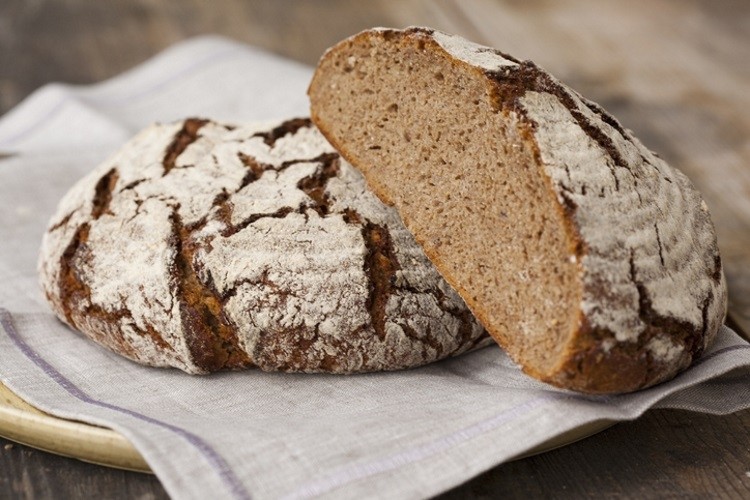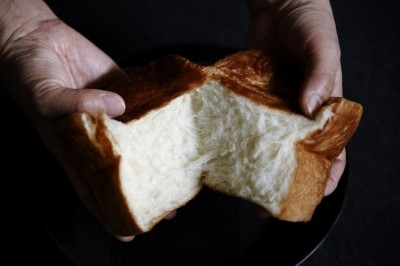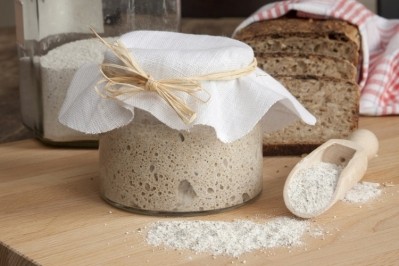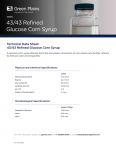Swedish RyeWeight study confirms bread can actually aid weight loss

Bread is often touted as the culprit of weight gain, but Swedish researchers have confirmed swapping out bread made from refined flour with rye bread can actually aid weight loss.
The RyeWeight study – published in Clinical Nutrition ESPEN in July – found a hypocaloric diet rich in high fibre rye foods causes greater reduction in body weight and body fat than a diet of refined wheat.
The researchers studied 242 overweight or obese adults with a BMI of 27-35kg/m2, and found the participants on an energy restricted diet of high fibre rye products lost more than 1kg of body weight and 0.54% body fat over a period of 12 weeks than the wheat group.
According to mounting research, whole grains help to prevent coronary heart disease, cancer and premature death. Research suggests that eating just two slices of whole grain bread and one bowl of unrefined grains daily may significantly lower the risk of cardiovascular problems and stroke. Furthermore, these foods may protect against colorectal cancer, diabetes and chronic inflammation due to their high nutritional value.
The fibre king
Taking this a step further, among the group of whole grains, rye is the richest source of dietary fibre. This aids satiety faster and for longer – in fact, up to eight hours longer than refined wheat, according to the RyeWeight scientists.
Unlike other whole grains, rye has a high level of fibre in its endosperm as well as its bran. Because fibre is the part of the plant that our bodies can’t break down, it passes through our system undigested. Combined with adequate fluid intake, it keeps the digestive tract in proper functioning order and reduces the risk of heart disease and diabetes.
It also has a lower glycaemic index (GI) than other grain products, meaning its carbohydrates are broken down into glucose more slowly, keeping blood sugar levels steady.
Furthermore, rye has been linked to a range of other beneficial health effects such as reductions in cholesterol and reductions in low-grade inflammation.
Rye is high in protein, low in fat and a good source of nutrients like manganese, copper, magnesium, phosphorous, B-complex vitamins, phenolic antioxidant compounds and many other vitamins and minerals.
Like wheat, rye is a grain that can be used both in its whole form and in a refined form, according to the Grains & Legumes Nutrition Council. Bread made from wholegrain rye flour has a dark colour, while refined rye flour produces a lighter-coloured bread.
While whole grains are receiving increased attention for their potential role in weight regulation, hard evidence still remains inconsistent. A high intake of whole grains is inversely associated with body mass index (BMI) and body fat in observational studies, but mixed results have been found in interventional studies (no attempt is made to affect the outcome of an observational study – for example, no treatment is given – whereas an interventional one is a clinical trial where participants receive some kind of intervention – in this case, following a strict diet).
Hence the RyeWeight study to determine the effect of consuming high fibre rye products compared to refined wheat products on body weight and body fat loss in the context of an energy restricted diet.
The study
After a two week run-in period, the study participants were randomly selected to follow a 12-week diet of either high fibre rye-based breakfast cereals, crisp breads and soft bread or refined wheat alternatives. During all 14 weeks, all participants were instructed to adhere to a hypocaloric diet aiming at a 500 kcal energy deficit, but maintaining the Nordic Nutrition Recommendations’ macronutrients (45-60 E% carbs, 10-20% protein, 25-40% fat).
The breakfast cereals consisted of extruded rye and wheat puffs, as well as rolled rye flakes and semolina wheat, packed in 30g portions, of which the participants were instructed to consume twice daily. The rye group had four different rye crisp breads to choose from and were instructed to consume 4-6 slices per day (53-60 g/day), while the wheat group had to consume 5 slices of only one type of crisp bread per day (66 g/day). Soft bread was provided frozen in the form of one wheat bun (70g) or 2-2.5 slices of rye bread (70g) daily. The products amounted to approximately 650 kcal in both groups (30-50% of the participants daily energy intake), however, the fibre content obviously differed substantially (rye group consumed 30g fibre/day, while the wheat group got 8g fibre/day).
The participants were also instructed to minimise their consumption of sweets, cakes, fast food and soft drinks; choose ‘keyhole’ labelled products to reduce the intake of sugar and fat; ensure that half their lunchtime or dinner plate was made up with veggies; and decrease its portion size.
At week 0, week 6 and week 12, body weight and body composition was measured, blood samples collected and subjective appetite evaluated. The participants also had to fill in questionnaire on their physical activity and gastrointestinal symptoms, along with a Three Factor Eating Questionnaire (TFEQ) to evaluate their behaviour regarding cognitive restrained eating, uncontrolled eating and emotional eating.
The tests were conducted at a research clinic in Uppsala Science Park and at the clinical nutrition research lab at Uppsala University Hospital.
The results
At week 12, results showed that the body weight in the rye group was significantly lower than the body weight in the wheat group. In fact, the rye group had on average lost 2.9kg compared to the wheat group’s 1.8kg.
The rye group also had a lower body fat percentage, although this was what the scientists called ‘borderline significant’. BMI, fat mass, waist and hip circumference were lower in the rye group than in the wheat group, which is to be expected due the higher weight loss.
Lean body mass did not decrease in either of the groups, showing the weight reduction was primarily due to a reduction in fat mass. Blood pressure, too, did not differ between the two and remained within the normal range for the entire period.
While there was a difference in LDL ('bad') cholesterol after six week, interestingly, the difference was caused by an increased LDL cholesterol concentration in the refined wheat group, rather than a decrease in the rye group.
Furthermore, participants in the rye group had a lower concentration of C-reactive Protein (CRP) – which measures the amount of a protein in the blood that signals acute inflammation – compared to the participants in the wheat group.
The researchers did conclude, though, that a link between weight loss and appetite response was not shown in this study, but this could have been down to methodological issues and suggested this warrants further investigation.
Studies
Authors: Kia NøhrIversen, Frida Carlsson, Agneta Andersson, et al
Clinical Nutrition ESPEN, Volume 45, October 2021, Pages 155-169
doi.org/10.1016/j.clnesp.2021.07.007
Whole Grains Council. Summary of Recent Research On Whole Grains and Health, 2017 edition.
Authors: K. Pol, R. Christensen, E.M. Bartels, A. Raben, I. Tetens, M. Kristensen
Am J Clin Nutr, 98 (2013), pp. 872-884

















